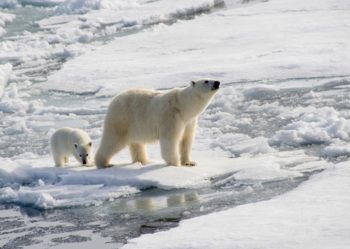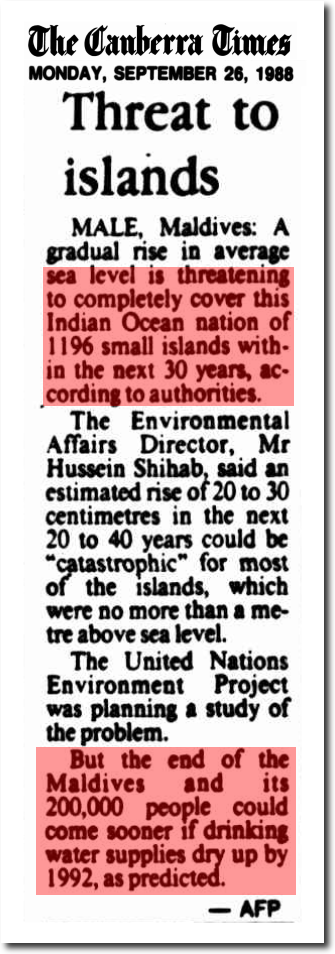
Taken in August 2017 by biologist Paul Nicklen, a co-founder of the Canadian non-profit SeaLegacy, the video was posted on Instagram in December 2017, stating, “This is what starvation looks like” as part of a discussion about climate change.
Two days later, SeaLegacy’s media and communications partner, National Geographic, published the video with added subtitles that began: “This is what climate change looks like.”
The SeaLegacy webpage published the video also, under a headline that claimed: “This is the face of climate change.” The message was clear: Blame climate change for this bear’s fate.
The National Geographic video went viral, with an estimated audience of 2.5 billion (it set a site record), and garnered international media attention that blamed global warming for the polar bear’s plight.
The backlash from the public was swift and fierce. Some were angry that nothing had been done to help the bear.
Nicklen insisted he could not have saved it: “It would also have been illegal to feed him, to approach him, or to do anything to ease his pain.” The last bit is not quite true.
Nicklen could have called the nearest conservation officer, who would have euthanized the bear and arranged a necropsy to determine the cause of the bear’s poor condition (which was likely one of the cancers known to cause muscle wasting in polar bears).
But a necropsy result would have hamstrung Nicklen’s plan to use the starving-bear video to spur action on climate change, so he and his crew simply let the bear swim away without telling anyone, extending the animal’s suffering.
Many other viewers were furious that an obviously sick animal had been deliberately exploited to advance a political agenda based on lies.
Climate change was clearly not the cause of this bear’s plight: Sea-ice loss had not been exceptionally high that year and no other bears in the area were starving. Viewers felt manipulated.
The criticism continued for months until, out of the blue, some previously undisclosed facts about the incident were revealed online in an essay written by Nicklen’s SeaLegacy partner, Cristina Mittermeier, destined for the August 2018 print issue of National Geographic.
Mittermeier admitted Nicklen was scouting for an image that could be used to “communicate the urgency of climate change” when he spotted the emaciated bear.
She confessed that she and Nicklen knew the bear was probably sick or injured before they started to film but proceeded regardless.
She also revealed that days passed between Nicklen’s first sight of the starving bear and the actual filming of it: He told no one about the suffering animal while he waited for his film crew to arrive.
In her essay, Mittermeier makes a number of excuses for the subsequent public outcry over the footage but ultimately blames National Geographic for subtitles on the video that missed the story’s “nuance.”
Apparently, she thinks SeaLegacy’s caption that implicated climate change is materially different from National Geographic’s caption that implicated climate change.
Oddly, National Geographic admitted culpability with an apology (embedded in Mittermeier’s essay) that begins: “National Geographic went too far in drawing a definitive connection between climate change and a particular starving polar bear in the opening caption of our video about the animal.”
Why would it issue such a mea culpa? Had the public backlash and editorial criticism hurt its organization more than it was willing to admit?
National Geographic might hope that Mittermeier’s essay and its apology will bring former supporters and donors back into the fold, but I suspect it’s done the opposite.
The additional details make the actions of the SeaLegacy founders harder to forgive, not easier. They also raise the question of whether this cruel and deliberate exploitation of a dying bear violated strict Nunavut conservation laws for documentary filmmaking. We’ll see.
Mittermeier claims the public should never have taken the video literally. However, it’s apparent people took it literally because it was presented as a simple message: Blame climate change for this bear’s suffering.
Mittermeier and Nicklen still don’t understand why their efforts backfired but it’s simple. They tried to dupe people with obvious lies and allowed an animal to suffer for days in order to satisfy their agenda.
Mittermeier says she’d do it again. Sadly, I believe her.
Susan Crockford is a zoologist and adjunct professor at the University of Victoria. She blogs about polar bears at www.polarbearscience.com.
Read more at National Post

















Just like the anti trapping camapaign of the dead Racoon in the leg hold trap it was staged most likely a roadkill one Greenpeace posing as seal hunters and the program SAY GOODBYE with the darting of a mother Polar Bear it was edited and a sound of a rifle shot was added It later lead to a big lawsuit by a wildlife Agent tranquilizing a Polar Bear fitting with tags and a marking like most of all the pictures from the various Eco-Wacko groups all faked and staged its the Smoke & Mirrors
Of course Mittermeier would do it all over again (and Natl Geo would publish it again) if she and they thought it could advance their lying agenda. No one should be surprised. And leaving the animal to suffer longer is no big deal to them.